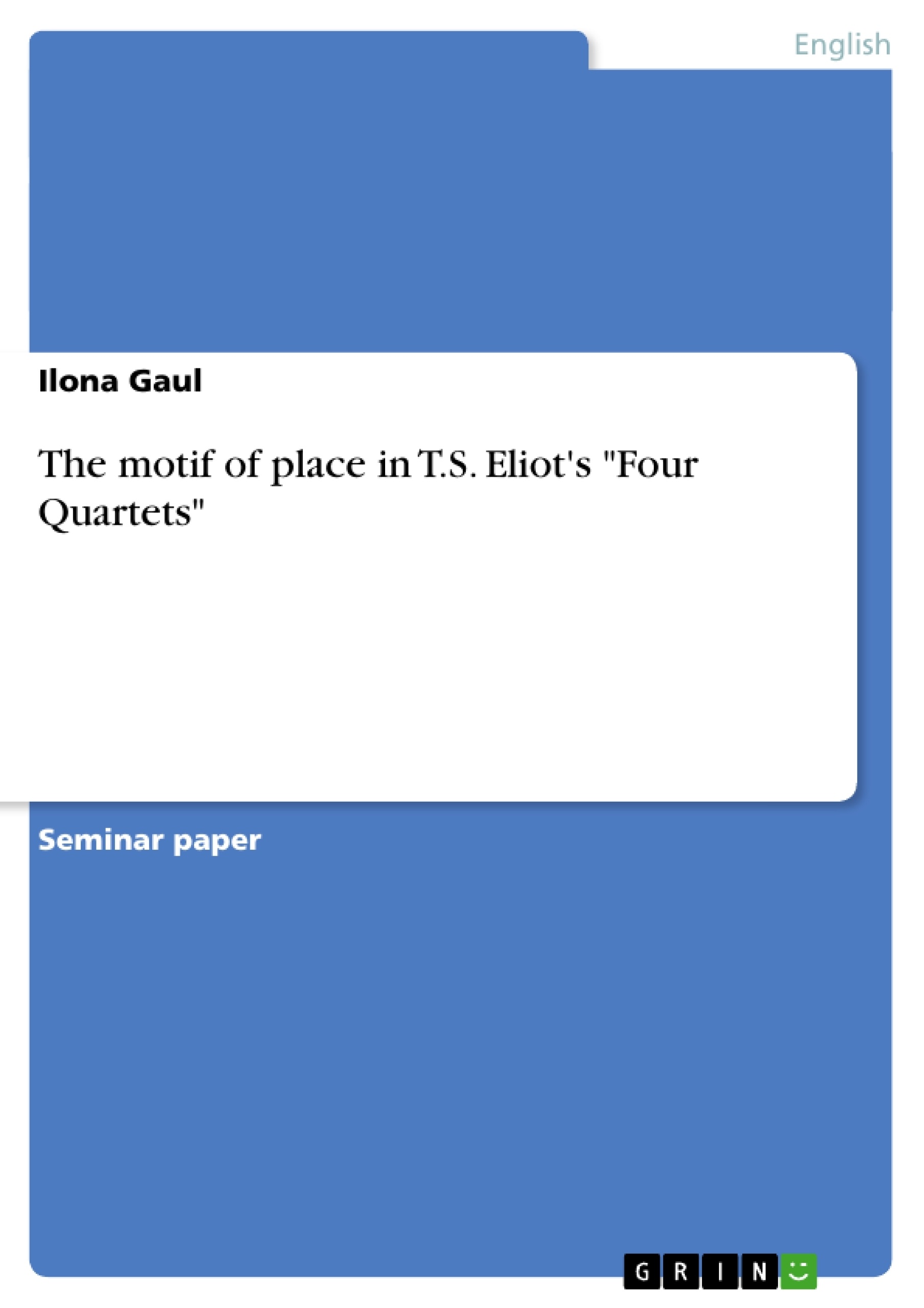The title of Eliot's poetic work Four Quartets already tells that it consists of four poems. These are named Burnt Norton, East Coker, Dry Salvages and Little Gidding. Each of them is separated into five sections. Eliot wrote them over a period of eight years, namely between 1935 and 1942 which was the time of the Second World War.
Probably it is to a great extent due to mirroring the identity of wartime Britain that Eliot reached with Four Quartets a large public for the first time. Today Four Quartets are considered to be Eliot's masterpiece. Each poem was separately composed and published as an independent work at first. Though each poem is individual they form together a perfect unity: Read consecutively each illuminates the others, and the symbols employed become richer and more solid with repetition; ... Four Quartets reveal Eliot's insights into the cyclical nature of life by means of themes and images which occur again and again throughout the poems. The quartets are regarded as the clearest exposition of Eliot's Christian beliefs. The very nature of experience, spiritual renewal and connections of the personal and historical present and past are addressed. Not only the central aspect of time is important but also the motif of place does play a major role in the quartets. Typically enough are the place
names each poem bears. The places which are mentioned are not simply geographical points; they are rather associated with deep emotions.
Inhaltsverzeichnis (Table of Contents)
- Introduction
- The Motif of Place in T. S. Eliot's Four Quartets
- Burnt Norton
- East Coker
- The Dry Salvages
- Little Gidding
- Conclusion
Zielsetzung und Themenschwerpunkte (Objectives and Key Themes)
This essay examines the motif of place in T. S. Eliot's "Four Quartets," exploring the significance of specific locations in each poem and their connection to Eliot's personal experiences and philosophical insights.- The role of place as a catalyst for spiritual reflection and personal growth
- The interplay of time and space in Eliot's poetry
- The significance of historical and cultural contexts in shaping individual experience
- The use of symbolism and imagery to evoke emotion and convey meaning
- The influence of Eliot's Christian beliefs on his poetic vision
Zusammenfassung der Kapitel (Chapter Summaries)
Introduction
Eliot's "Four Quartets" comprises four poems: "Burnt Norton," "East Coker," "The Dry Salvages," and "Little Gidding," each consisting of five sections. This work reflects the cyclical nature of life through recurring themes and imagery, providing insights into Eliot's Christian beliefs.The Motif of Place in T. S. Eliot's Four Quartets
Burnt Norton (1935)
"Burnt Norton," set in a ruined manor house in Gloucestershire, focuses on themes of time and the spiritual journey. The rose garden symbolizes the past, present, and future, and the "still point" represents the timeless and eternal. The underground serves as a contrast to the garden, representing a descent into darkness and the "dark night of the soul."East Coker (1940)
"East Coker," named after a village in Somerset, explores the cyclical nature of life, embodied in the phrase "In my end is my beginning." The poem contrasts the vastness of the open sea and fields with the confined spaces of human existence, highlighting the destructive and healing forces of the world.The Dry Salvages (1941)
"The Dry Salvages," set in a rocky landscape on the New England coast, explores the power and freedom of nature. Eliot uses the sea, river, and rocks as dominant images, emphasizing the interconnectedness of humanity and the natural world.Conclusion
This section is excluded due to spoiler concerns.Schlüsselwörter (Keywords)
The key terms and concepts explored in this essay include T. S. Eliot, Four Quartets, motif of place, spiritual journey, time, eternity, symbolism, imagery, Christianity, rose garden, still point, underground, East Coker, Dry Salvages, sea, river, nature, and human experience.- Quote paper
- Ilona Gaul (Author), 2005, The motif of place in T.S. Eliot's "Four Quartets", Munich, GRIN Verlag, https://www.grin.com/document/113524




